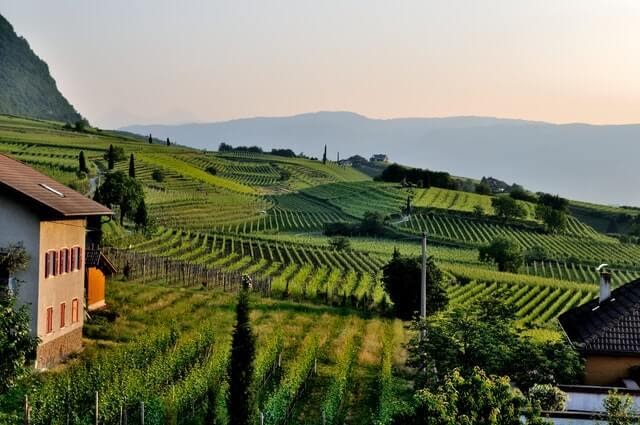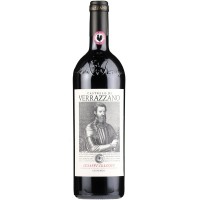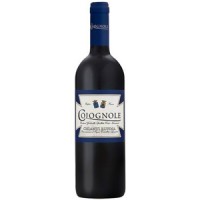As an export, Chianti is as famous and respected as pasta, pizza, and espresso. Many wine enthusiasts will be able to cast their minds back to a particularly fond memory of tasting this renowned Italian wine.
Many have asked the question: Is Chianti a grape or a region? Similar to Bordeaux or Champagne, Chianti derives its name from its place of origin rather than its grape varietal. Made primarily with the classic Tuscan grape, Sangiovese, this wine is more than just its flavour profile – its true essence derives from the region and sub-regions it is produced in.
Below, we will look at the wine region that gave its name to this red wine, the typical tasting notes and the ideal dishes to serve with Chianti.
Chianti: Understanding the Region and its Sub-Regions
Located in Tuscany, the Chianti wine region is known for a distinctive Italian characteristic: rolling hills accentuated by vineyards. Stretching over 100 miles north to south, this large region is known for producing wine from some of the most notable appellations in Italy. In fact, Chianti reached DOCG status in the 1980s. However, it is the Chianti sub-regions where the true magic happens.
Chianti has several sub-regions that are mostly found in and around Florence, Siena, Pisa, and Arezzo. Each of these sub-regions can produce wines in various styles such as Chianti, Classico, Annata, Riserva, and Gran Selezione, all having their own aging requirements.
Let’s take a further look into each of the core sub-regions:
- Chianti Classico – Considered the most important sub-region of Chianti, it is the only sub-region to hold its own DOCG. Known for their high-quality and aging properties, Chianti Classico wines have high acidity and a firm tannic structure. Variances in terroir lead to different styles produced in this sub-region. For example, wines from Greve are considered to have concentrated flavours while those from Radda are more elegant.
- Chianti Rufina – The smallest of the sub-regions, Chianti Rufina is located east of Florence. Nestled at the base of the Apennine Mountains, this region’s elevation, cool climate and agreeable soils produce Chianti wines that are elegant and ideal for aging.
- Chianti Colli Senesi – wines from Colli Senesi can offer good value and are notably elegant with fruit-driven characteristics.
- Chianti Montalbano – Located north of Florence, the Chianti Montalbano wine region offers vineyards that are heavily influenced by sandstone which gives the Sangiovese grape a light, fruit-forward style.
- Chianti Montespertoli – While it used to be part of the Fiorentini region, this sub-region was given its own designation in the late 1990s. This area’s special terroir and favourable climate allow it to produce particularly ripe Sangiovese grapes. Chianti Montespertoli wine is primarily a blended wine.
- Chianti Colli Fiorentini – Chianti Colli Fiorentini wines, produced just south of Florence, are known for being easygoing, fruity, and light-bodied. Many would recommend enjoying these wines while young.
- Chianti Colline Pisane – Located near the hills of Pisa, this lesser-known sub-region is closer to the coast and has a milder climate. This, in turn, produces yields that lead to wines that are light in colour and body, with soft fruit notes.
Although each sub-region can give their wine a unique name, they do not have a legal appellation and are categorized under Chianti DOCG.
Tasting Guide to Chianti Wine: What to Expect on First Sip
Like most Italian wines, wine from the Chianti region tends to be dry, but can certainly pack a punch in the flavour department. Known for having an aromatic, fruit-forward profile, younger expressions of this wine are characterized by notes of red currant, red plum, cherry, or raspberry.
Although its primary tasting notes are more fruit-forward, many sommeliers remind wine enthusiasts to search for its more nuanced characteristics. For example, an aged Chianti can often be described as earthy and can display hints of dried flowers, clay, balsamic vinegar, and bitter herbs.
Chianti Food Pairing Ideas: How to Serve
A wine that is produced from some of the finest Italian traditions deserved to be paired with its own. As is often the case for Tuscan wines, and Italian wines in general, Chianti is best enjoyed with Italian cuisine from the region. Due to its high acidity and moderate tannin levels, this wine is capable of pairing with a variety of flavours and textures.
If you are looking for an ideal Chianti wine pairing, we recommend you pair with tomato-based pasta sauces such as a rich, flavoursome Spaghetti Bolognese. It is equally delightful when paired with gamey meat such as wild boar and venison.



